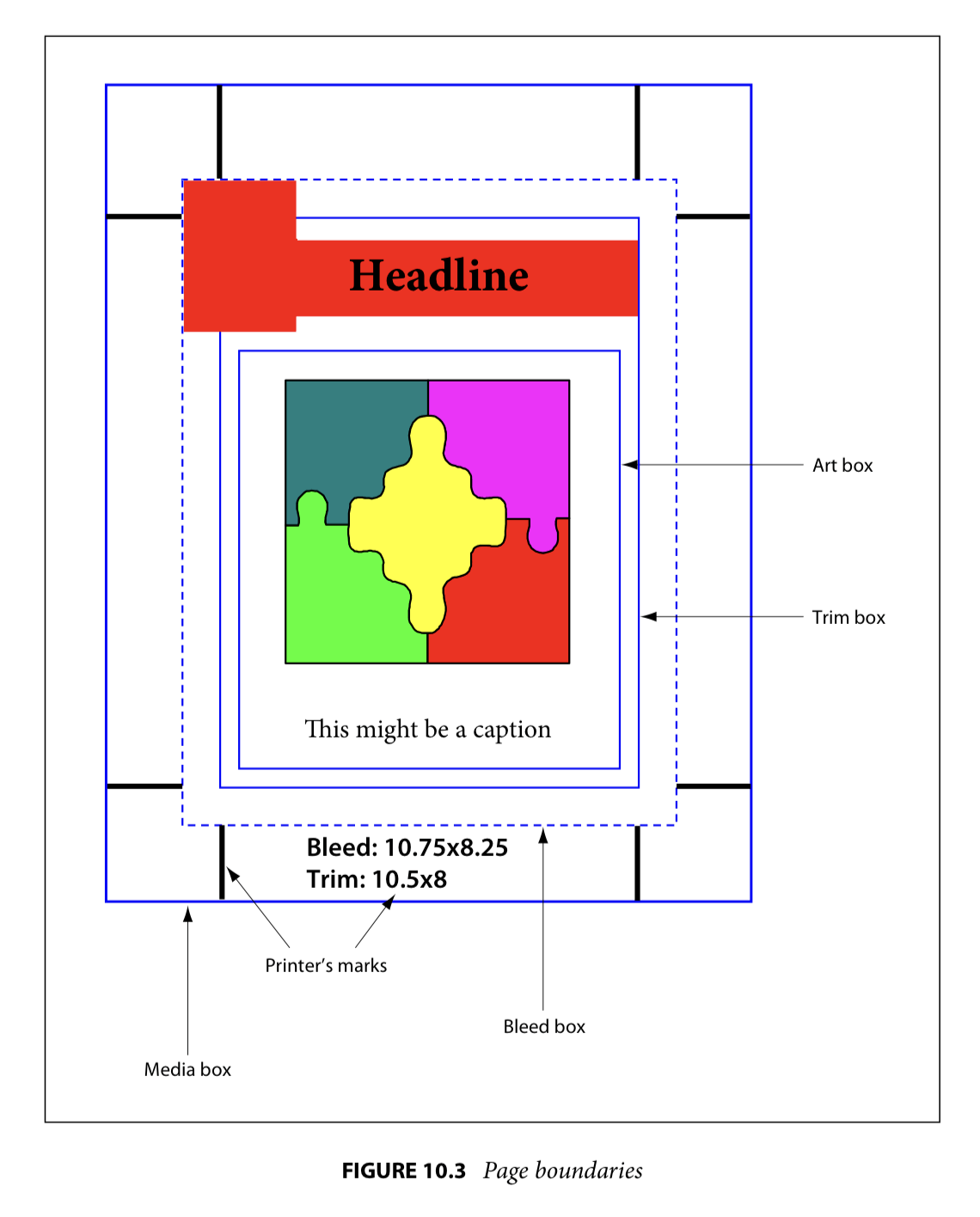The PDF page boxes: MediaBox, CropBox, BleedBox, TrimBox & ArtBox
A PDF describes the content and appearance of one or more pages. It also contains a definition of the physical size of those pages. That page size definition is not as straightforward as you might think. There can in fact be up to 5 different definitions in a PDF that relate to the size of its pages. These are called the boundary boxes or page boxes:
· The MediaBox is used to specify the width and height of the page. For the average user, this probably equals the actual page size. For prepress use, this is not the case as we prefer our pages to be defined slightly oversized so that we can see the bleed (Images or other elements touching an outer edge of a printed page need to extend beyond the edge of the paper to compensate for inaccuracies in trimming the page), the crop marks and useful information such as the file name or the date and time when the file was created. This means that PDF files used in graphic arts usually have a MediaBox which is larger than the trimmed page size.
· The CropBox defines the region that the PDF viewer application is expected to display or print. So if a PDF contains a CropBox definition, Acrobat uses it for screen display and printing. For prepress use, the CropBox is pretty irrelevant. The GWG industry association recommends not to use it at all.
· The TrimBox defines the intended dimensions of the finished page. Contrary to the CropBox, the TrimBox is very important because it defines the actual page size that gets printed. The imposition programs and workflows that I know all use the TrimBox as the basis for positioning pages on a press sheet. By default the TrimBox equals the CropBox.
· The BleedBox determines the region to which the page contents needs to be clipped when output in a production environment. Usually the BleedBox is 3 to 5 millimeters larger than the TrimBox. It is nice to know the size of the BleedBox but it isn’t that important in graphic arts. Most prepress systems allow you to define the amount of bleed yourself and ignore the BleedBox. By default the BleedBox equals the CropBox.
· The ArtBox is a bit of a special case. It was originally added to indicate the area covered by the artwork of the page. It is never used for that but can be handy in a few cases:
· On a PDF page that contains an advertisement, the ArtBox can be used to define the location of that ad. This allows you to place that PDF on another page but only use the area covered by the advert.
· A more common use of the ArtBox is as a means to indicate the safety zone. When creating a poster that will be placed in a lightbox, the designer must make sure text and logo’s aren’t positioned too close to the edge. If the poster is not mounted properly, this could cause that text or logo to disappear behind the frame of the lightbox. In book design, there is also a margin where you cannot put text because the binding might make it difficult to read text that is too close to the spine. The area where it is safe to place graphic elements is called the safety zone or text safe area. The ArtBox can be used to indicate the dimensions of this part of the page.

General rules regarding page boxes
· Each page in a PDF can have different sizes for the various page boxes.
· The page boxes are always rectangular. That may seem logical but artwork is not always rectangular: a PDF can represent an oval label or the foldout of a cardboard box.
· A PDF always has a MediaBox definition. All the other page boxes do not necessarily have to be present in regular PDF files.
· The above rule is not true for the PDF/X file formats:
· PDF/X-1a and PDF/X-3 compliant files need to include the MediaBox, TrimBox, and BleedBox.
· PDF/X-4 files need, next to the MediaBox, a TrimBox or an ArtBox, but not both. The ArtBox or TrimBox cannot be larger that the BleedBox. If a CropBox is present, the ArtBox, TrimBox, and BleedBox need to extend beyond its boundaries.
· The MediaBox is the largest page box in a PDF. The other page boxes can equal the size of the MediaBox but they are not expected to be larger (The latter is explicitly required in the PDF/X-4 requirements). If they are larger, the PDF viewer will use the values of the MediaBox.
BBox
Within PDF files there is another box, the bounding box or BBox, that is used. The bounding box is a rectangular frame that determines the dimensions of an object (such as a graphic, font or pattern) that is placed inside a PDF document. As such, this box has nothing to do with the page boxes.